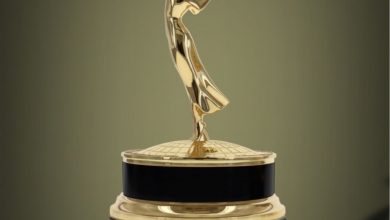2020: The Year of LGBTQ+ Representation in Cartoons
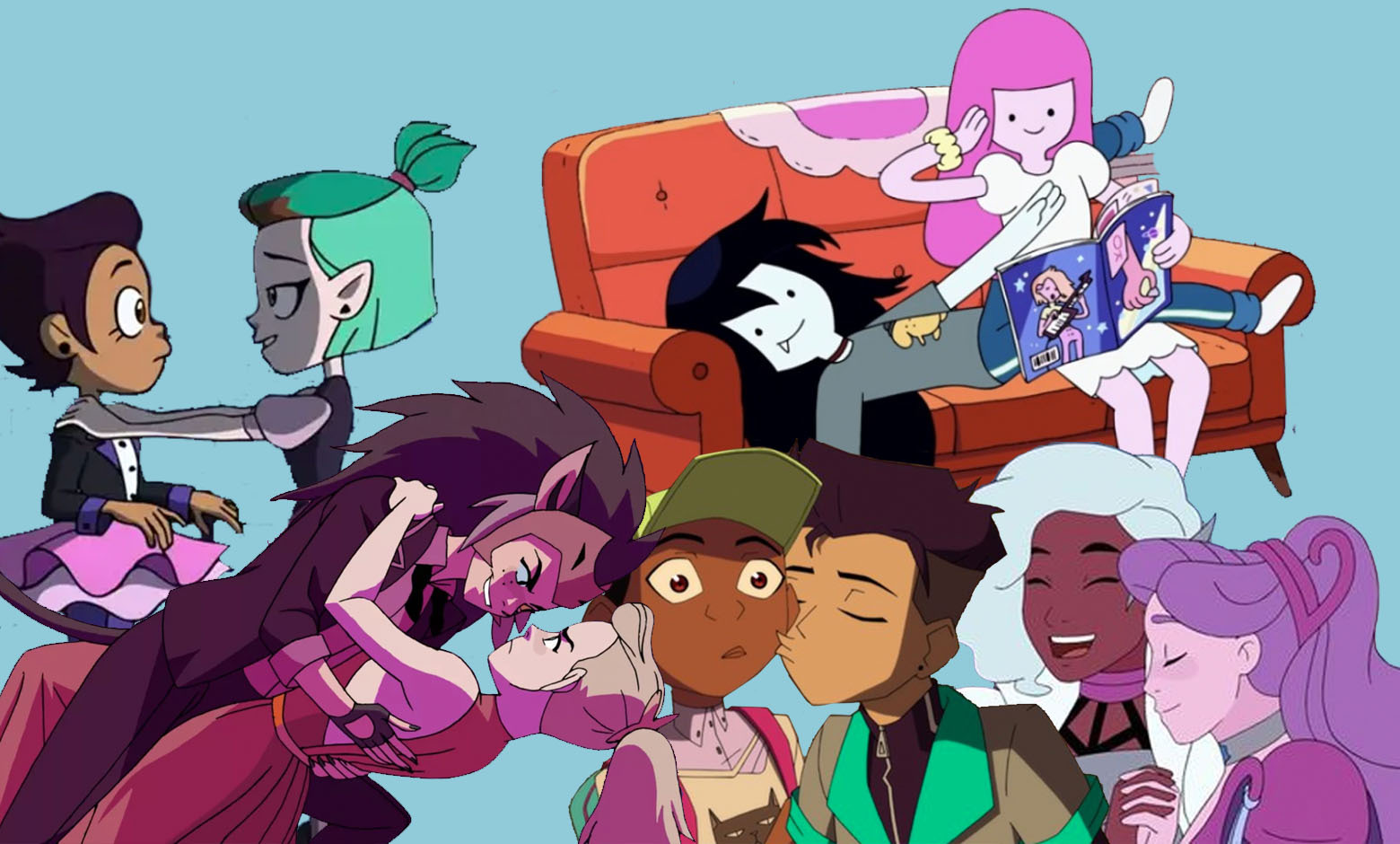
Design by Shannon Boland
Image description: Blue background with a collage of LGBTQ+ cartoon couples. Top row from left to right: Luz Noceda, Amity Blight, Marceline, and Princess Bubblegum. Bottom row from left to right: Catra, Adora, Benson, Troy, Nettossa, and Spinnerella.
Despite the increase in queer representation in media within the past decade, it’s still difficult to find representation that doesn’t somewhat dabble in the infamous stereotypes and tropes associated with LGBTQ+ characters. From the understandably hated “Bury Your Gays” trope to the queer-coded villains in the plethora of Disney movies, representation still has a long way to go. On the bright side, within the past few years animated shows have become a fond source of LGBTQ+ rep for the community. Thanks to the tireless efforts of many queer producers and artists such as Rebecca Sugar (“Steven Universe”), representation in children’s animated shows has grown immensely. If you’ve found yourself either wanting a light-hearted dose of LGBTQ+ rep mixed in with that sweet, sweet, nostalgia of cartoons look no further. In just 2020 alone, the influx of queer representation on TV has given everyone at home a little more hope. Here are a few noteworthy shows that you should check out (Spoilers ahead):
1. “She-Ra and the Princesses of Power” (Dreamworks): Catra and Adora, Spinerella and Netossa
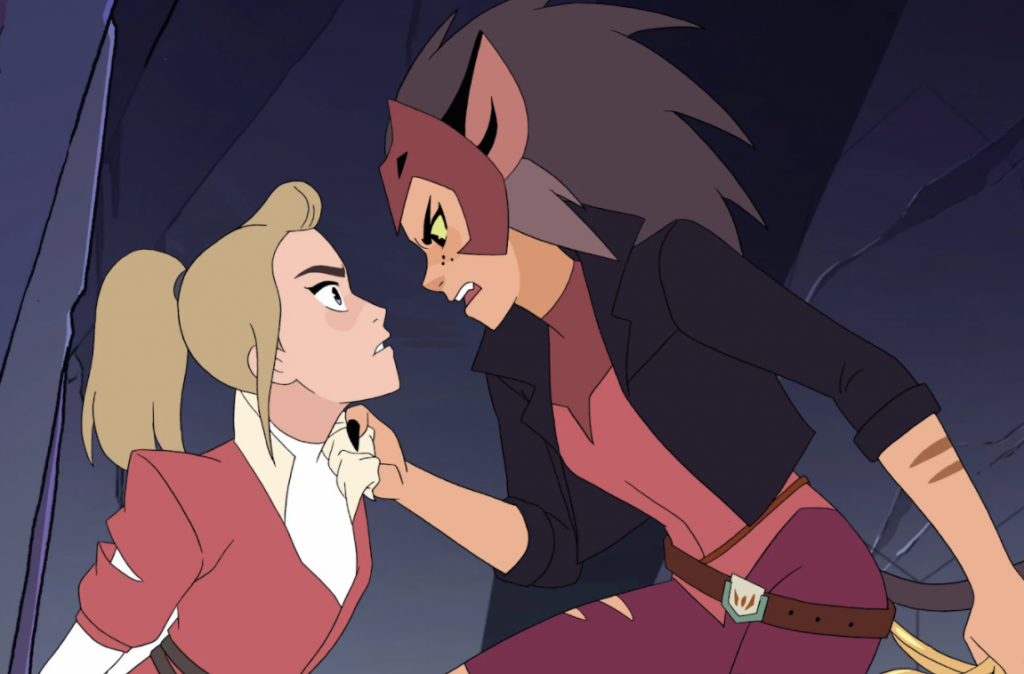

It’s hard to believe that the final season of the reboot came out in May 2020, but fans were elated to witness the kiss between Catra and Adora in the final moments of the series. In an interview, showrunner and executive producer Noelle Stevenson described the process of working on the show and shaping the two main characters’ relationship stating, “A lot of times we hold ourselves back or we limit how far we think we can go because we’re scared. And we’re scared that we’re pushing too far too soon.” Stevenson didn’t want to promise fans a canonical romantic relationship between the two main characters and then fail to deliver; however, the build-up of Catra and Adora’s relationship throughout the five seasons gave a payoff that was worth the wait.
In addition to Catra and Adora’s rich and complex dynamic throughout the series, the show features a sapphic couple in the supporting cast. Spinnerella and Netossa are both princesses as well as a married couple. The two start off as minor characters who make an appearance every now and then, but take on a more substantial role in season 5. When Spinnerella is under main antagonist Horde Prime’s mind control, Netossa has to decide whether to hurt Spinnerella or allow her to destroy the village under attack. As cheesy as it is, Netossa is able to temporarily disable the mind control by reminding Spinnerella of their love for one another before she finally destroys the mind control chip.
2. “The Owl House” (Disney): Amity Blight and Luz Noceda
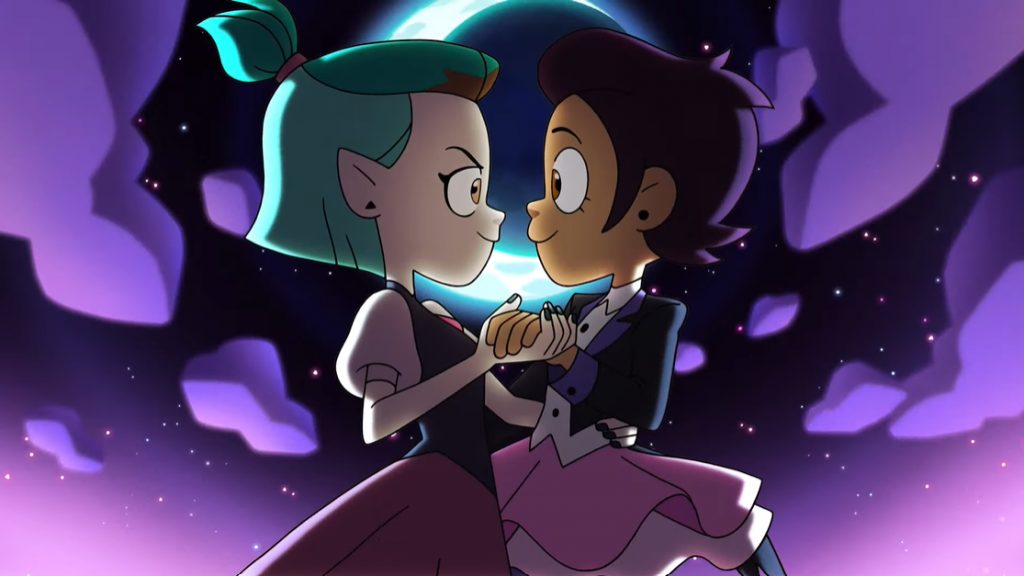
Released in early 2020 and with just 19 episodes, “The Owl House” follows the human Luz Noceda and her adventure in a supernatural world of witches and monsters. During her time in the Boiling Isles and learning the ins and outs of being a witch, she often runs into her nemesis Amity Blight. The two start off in an intense rivalry, though their relationship develops a bit more with each encounter. A pivotal part of the show that helped win many LGBTQ+ fans over was the Grom episode, in which it’s revealed that Amity planned on asking Luz to the dance (but was never able to).
While “The Owl House” so far only has one season out, its creator Dana Terrace doesn’t shy away from announcing that Luz is bisexual. Disney is known for its history of either queer-coding its villains or just straight up avoiding anything relating to the LGBTQ+ community (though now many of its movie franchises have pushed out some half-baked attempts). So it’s nice to know that Terrace is pushing for a canonical relationship between Amity and Luz (and has received support from executives)! Terrace has explained that she identifies as a bisexual woman and heavily modeled Luz after herself. While Luz and Amity’s relationship is just starting to bud in the first season, the show has made it pretty obvious that Amity has a huge crush on Luz.
3. “Kipo and the Age of Wonderbeasts” (Netflix): Benson Mekler and Troy Sandoval
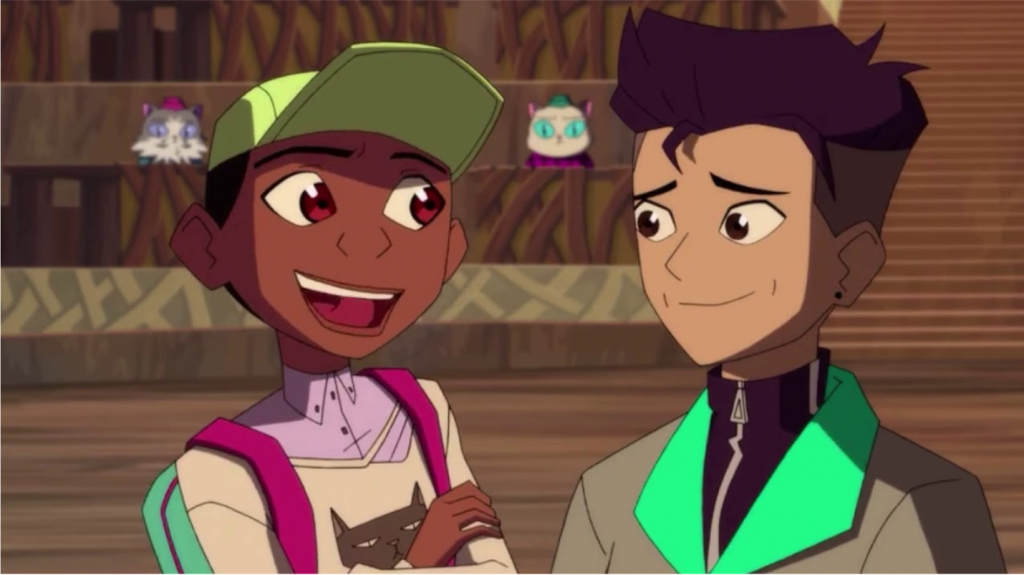
It’s often hard to find MLM representation in animated shows (let alone LGBTQ+ men of color), which is why I hold Benson and Troy so dearly to my heart. “Kipo and the Age of Wonderbeasts” has a fascinating plot and unique art style to hold itself up on its own, but the LGBTQ+ representation has made it even more memorable.
Benson is introduced within the first few episodes of the show and serves as one of the main characters. His dynamic with Kipo hints at the beginning of a romantic relationship between the two until he tells her that he’s gay. It’s this statement that’s so simple yet significant when it comes to representation in a kid’s show. We’ve seen admissions of love in prior shows between same-sex couples, but to have a character explicitly state their sexuality is something relatively new in cartoons. Benson’s sexuality isn’t just shunted to the back or made his only personality trait — he’s super into music and is a witty, loyal friend!
Towards the end of season 1, we’re introduced to Benson’s love interest Troy. Their relationship begins to develop as a minor plot point throughout the series. In the final season, Benson and Troy both ask each other to the dance and even share an on-screen kiss (as well as several instances of referring to each other as boyfriends). The final episode of the show features Benson and Troy years later running a restaurant.
4. “Adventure Time: Distant Lands” (Cartoon Network): Marceline and Princess Bubblegum
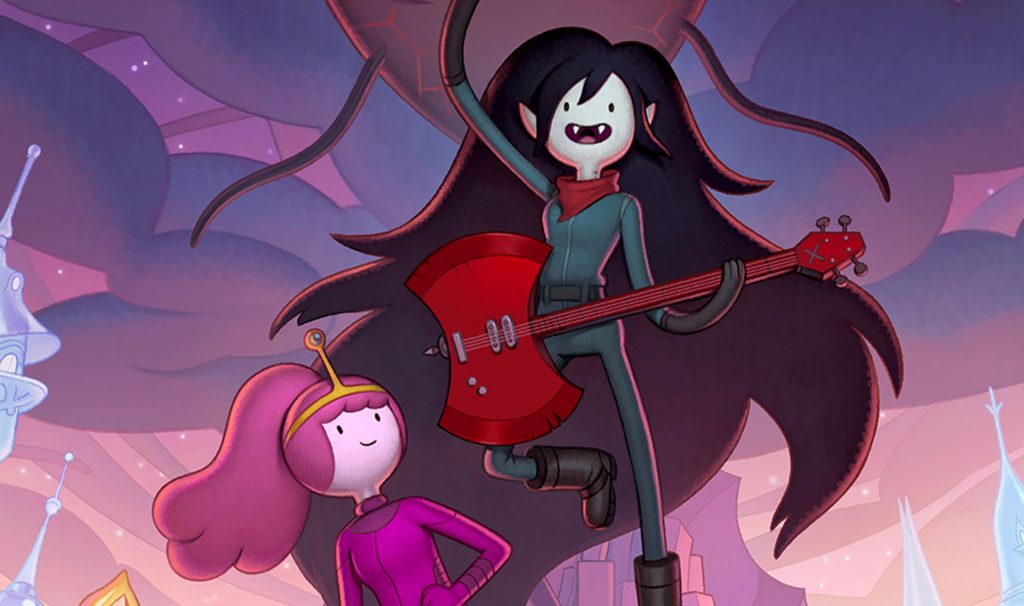
Long-time fans were overcome with excitement at the series finale of “Adventure Time,” in which Marceline and Princess Bubblegum share a kiss. It’s heavily implied that Marceline and Princess Bubblegum become an official couple, but the “Adventure Time: Distant Lands” episode gives us insight into what their lives are like after the series — as well as some history on their relationship. At the beginning of the original series, the two characters have a tense relationship and it’s refreshing to see how far they’ve come.
In the “Distant Lands” episode, a citizen from the Glass Kingdom seeks out Marceline’s help, where some unresolved tension begins to surface. We find out that it was the events that occurred years before at the Glass Kingdom that caused a rift between the two girls; a thoughtless insult hits home for Marceline and she performs an entire song dedicated to trashing Princess Bubblegum. What makes this episode so poignant with LGBTQ+ audiences isn’t just Marceline and Princess Bubblegum’s dynamic as a couple (and their second on-screen kiss) or the amazing soundtrack, but the history of Marceline and the explanation for why she acts the way she does. One of the final songs of the episode, “Monster”, is a tribute to not just Bubbeline as a couple but also Marceline as a character.
There are a multitude of factors that distinguish the representation in animated shows from others. In a lot of other shows and movies the queer characters are hypersexualized and often limited to their sexuality. The representation we see in these animated shows is a lot more nuanced, building the characters individually before presenting them as possible love interests. While this could be the influence of executives wanting to avoid being too direct in talking about this topic, it makes for a more genuine and realistic portrayal of LGBTQ+ individuals. There’s still a misconception about queer topics being inherently explicit and thus something that shouldn’t be discussed around children. Introducing LGBTQ+ characters and relationships to children early on helps break down this idea and may even guide them on their own path of self-discovery.

